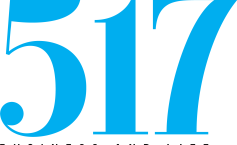How to Find the Right Industrial Steel Supplier: Key Factors to Consider
Finding a steel supplier that has what you need, when you need it, and reliably gets it to you on time makes it much easier for you to continue your operations as usual without needing to worry about where your steel is. But how do you know which supplier is best for you? Here are […]
read MoreEmployee Spotlight: Meet Scott Pruden!
Meet Scott Pruden, a dedicated member of our Maintenance team! Check out the questions below to get a glimpse into Scott’s world and what makes him such a valued part of our team! How many years have you worked at CSW? Just over 12 years What is your favorite thing about working at CSW? Getting […]
read MoreDemystifying How Steel is Made
In the simplest of terms, steel is a combination of iron and carbon, but how iron and carbon (and other alloying elements) come together to create steel with different properties and characteristics is a far more complex matter. Steel is the most significant and extensively used construction material on the planet, as evidenced by its […]
read MoreEmployee Spotlight: Say Hi to Sam!
In this edition of our employee spotlight series, we’re excited to feature Sam Nakfoor, one of our exceptional Sales Associates at Capital Steel & Wire. Join us as we dive into Sam’s insights about his job, his passions, and what makes him such a remarkable member of our team! How many years have you worked […]
read MoreIndustry 4.0 Adoption and Its Impact on Steel Supply
Industry 4.0 has drastically changed almost every industry globally, and the steel industry, despite being one of the world’s oldest industries, is no exception. Let’s explore how Industry 4.0 is shaping and revolutionizing the steel industry. What is Industry 4.0 and How Does it Relate to the Steel Industry? Often referred to as the fourth […]
read MoreEmployee Spotlight: Meet Ricky and Richard Heyer!
In this edition of our employee highlight series, we spotlight our very own father-and-son duo: Richard Heyer, who works in Shipping & Receiving, and Ricky Heyer, our Draw Bench Operator. We delve into their careers, their passions, and their answers to a few fun questions along the way! In the first section of this blog […]
read MoreAll About the Buy American Act: How Can it Help Steel Manufacturers?
Originally signed into law by President Herbert Hoover on his final day in office in 1933, the Buy American Act has been revised a number of times since, all with the goal of strengthening American industries and creating jobs for American workers. What is the Buy American Act? The Buy American Act became a United […]
read MoreEmployee Spotlight: Say Hello to De’Anna Smith, our Human Resources Manager!
In this month’s edition of our employee highlight series, we’re excited to showcase De’Anna Smith, our Human Resources Manager here at Capital Steel & Wire. Let’s take a closer look at her career, interests, and many other things that make her amazing! How many years have you worked at Capital Steel & Wire? It will […]
read MoreEmployee Spotlight: Meet Dakota Steele, our Quality Associate!
In this edition of our employee spotlight series, we get to learn more about Dakota Steele, our amazing Quality Associate here at Capital Steel & Wire. Join us as we dive into Dakota’s thoughts on his job, his cool hobbies, and what makes him such an awesome part of our team! How many years have […]
read More1018 vs. 1045 Steel Comparison: Chemical & Mechanical Properties
The 1018 and 1045 grades of carbon steel are some of the most widely used materials in the world, particularly in their cold drawn steel bar forms. However, many struggle with differentiating between the two steel grades and deciding which grade would be best for their project. As experts in all things steel, we compiled […]
read More














